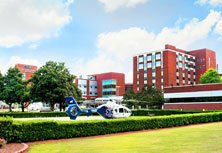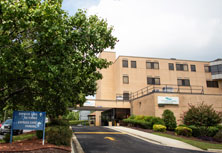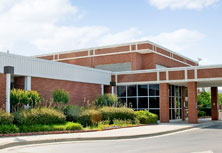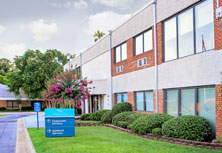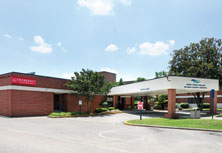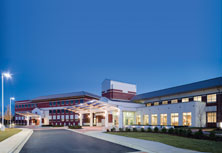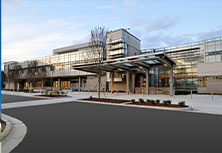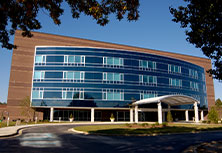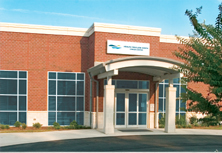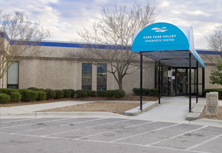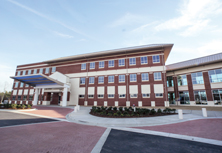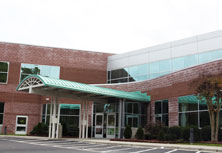Septoplasty
After evaluation by a physician, you may be diagnosed with a deviated nasal septum as a cause for airway obstruction. A Septoplasty may be recommended, which is a surgical procedure to straighten the nasal septum. This procedure is typically performed in the operating room under general anesthesia as an outpatient procedure, meaning you typically go home the same day. During the procedure, your surgeon first raises the lining, or mucosa, covering the septum off of the underlying cartilage and bone. This cartilage and bone can then be reshaped and removed as needed, taking care to leave adequate support for the nose, so as not to change its external appearance. The lining of the septum is then laid back down and dissolvable stitches are sometimes used inside the nose. Your surgeon may or may not place splints or packing in your nose that may need to be removed after surgery.
After surgery, the majority of patients will experience significant improvement in their symptoms. However, it does take time for the body to heal, and some patients may notice dramatic improvement immediately following surgery, while others may take several weeks before they feel substantially better. This depends on a number of factors including the extent of surgery that was done and the patient's personal experience. Remember, it takes time for the nose to fully heal after surgery.
- PAIN Some patients experience minimal pain after surgery, while others may experience significant pain for several days. You will be prescribed pain medication to help you control pain after surgery. If you are hesitant about using prescription pain medication, you can take over-the-counter Tylenol.
- BLEEDING It is common to see blood-tinged nasal secretions during the first week after surgery. It is helpful to keep your head elevated and avoid blowing your nose. If you need to sneeze, it helps to sneeze with your mouth open to reduce pressure in your nose. Avoid strenuous exercise for the first 2 weeks after surgery. Also, avoid medications that can thin your blood such as aspirin, ibuprofen, Advil, Aleve, Motrin, Coumadin, Plavix, herbal medications, and vitamins until cleared by your surgeon. It is NOT normal to have heavy amounts of bleeding after surgery. If you have significant bleeding that does not stop after holding pressure on your nose for several minutes, or are concerned that you are bleeding too much, call our office or on-call number immediately, or go to the closest emergency room for further evaluation.
- NASAL CONGESTION/OBSTRUCTION Some patients may notice dramatic improvement in their nasal congestion immediately after surgery, while other patients may not notice improvement for several days to weeks. After surgery, nasal congestion may be related to a number of factors including packing, crusting, and normal post-surgery swelling. Be patient, follow your post-operative care instructions, and follow up with your surgeon. It will get better.
- FATIGUE It is common to feel tired in the first days to weeks after surgery. Remember to take it easy while your body is recovering.
- RETURN TO WORK Plan to take some time off after surgery. Some patients will be ready to go back to work in a matter of days, while others will need 1-2 weeks to recover. This will depend on the extent of your surgery, your recovery experience, and the nature of your work. If you have a desk job, you may be able to go back to work before the end of a week, but expect to be tired and limit your work demands. If you have a job that demands strenuous labor, you may need to take as much as 2 weeks off until your body has time to heal. Be patient. If you push yourself too hard and too fast, you may risk slowing the healing process. With time and good post-operative care, the vast majority of patients experience significant long-term improvement.
- MEDICATIONS Your surgeon may prescribe medications for you take before and/or after surgery, and these may include antibiotics and/or steroids. These medications are often prescribed to reduce bleeding during surgery and maximize the healing of your sinuses in the post-operative phase.
- PACKING You may or may not have packing in your nose after surgery. If you have packing, it comes in two varieties. One is absorbable and will dissolve on its own with time and regular saline irrigations. The other is not absorbable and will be removed by your surgeon at your follow-up visit. You should discuss this with your surgeon.
- SALINE IRRIGATIONS Your surgeon may instruct you to regularly irrigate your nose and sinuses with saline after surgery. These irrigations help facilitate your recovery after surgery and help to clean and moisturize your nose and sinuses. Your surgeon will show you how these work. Gently hold pressure while you lean over the sink or shower. You do not need to push hard. Here is a link to an instructional video about saline irrigations - saline irrigations
- CLINIC VISITS AFTER SURGERY It is very important to follow up with your surgeon after surgery. Your surgeon will look in your nose with an endoscope, remove any crusts and mucus that do not flush out with saline irrigations (you may hear this referred to as a procedure called "debridement"), and pull out any non-absorbable packing. This process is just as important as your surgery to ensure a great long-term result. Additionally, your surgeon will make sure you are healing well and are on the road to recovery.
